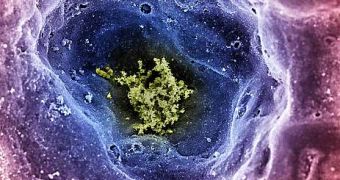They're not really functioning cybernetic organisms, but they may be a new step towards taking this concept from the sci-fi productions and bringing it to the real world. A new generation of electronics was now created by combining semiconductors with biological viruses, in what could be considered an environmentally-friendly technology.
Viruses are generally considered a nuisance, since the biological ones can cause severe human diseases, like herpes and SARS, and the virtual ones can crash computer systems and steal classified information.
However, they have a unique ability, which made them very useful in an experiment performed by nanotechnology researcher Angela Belcher, from Massachusetts Institute of Technology (MIT).
She exploited their ability to replicate extremely rapidly and was thus able to grow and self-assemble nanomaterials to form a functional electronic device. For this, the viruses were combined with semiconductors and other electronic materials in what could be called a "green chemistry."
The ecological side comes from the fact that the viruses were used to replace expensive and toxic materials used to manufacture currently available semiconductors and batteries and Belcher said the technology could be pushed even further.
Many applications could be found for this new technological process, which could translate into electronic devices like better, cheaper, faster and ecological transistors, batteries and solar cells and even major components of cell phones and computers.
"Dr. Belcher's research with viruses, proteins and yeast offers hope for new, ground-breaking solutions to the world's energy problems. It holds out the prospect of using nanotechnology in a variety of ways, ranging from improving the efficiency of production, storage, and transmission of energy to overcoming many of the obstacles to a hydrogen-based transportation system based on fuel-cell powered cars and trucks," said David Rejeski, director of the Project on Emerging Nanotechnologies at the Wilson Center.

 14 DAY TRIAL //
14 DAY TRIAL //